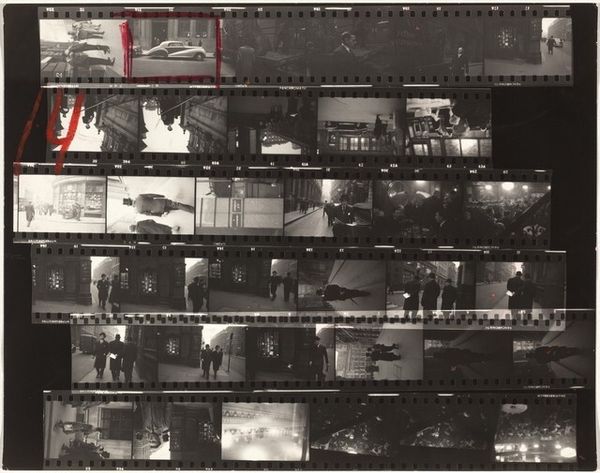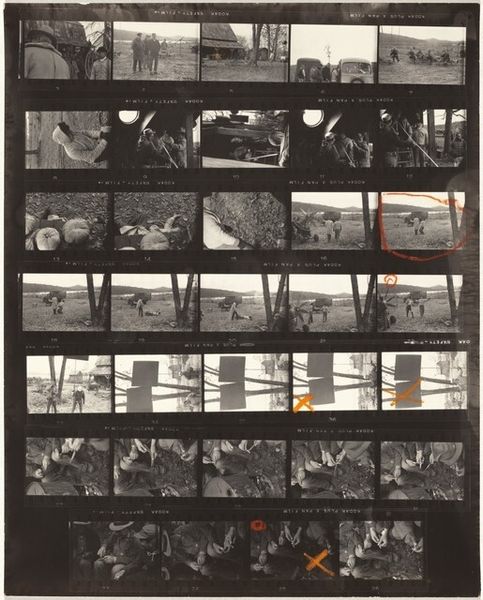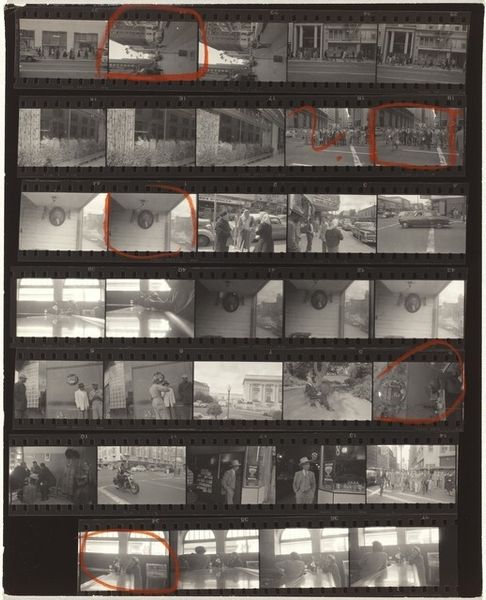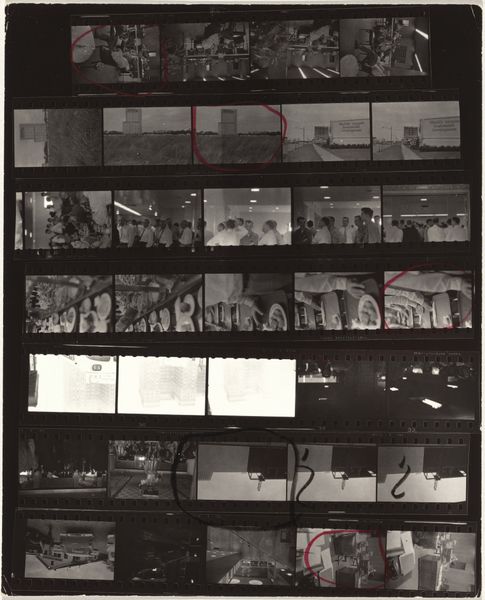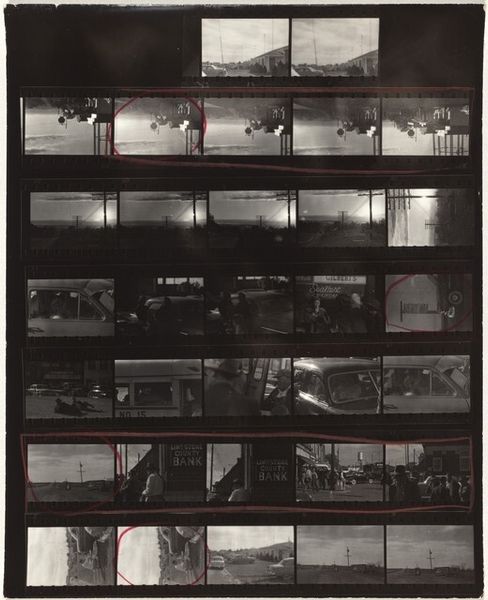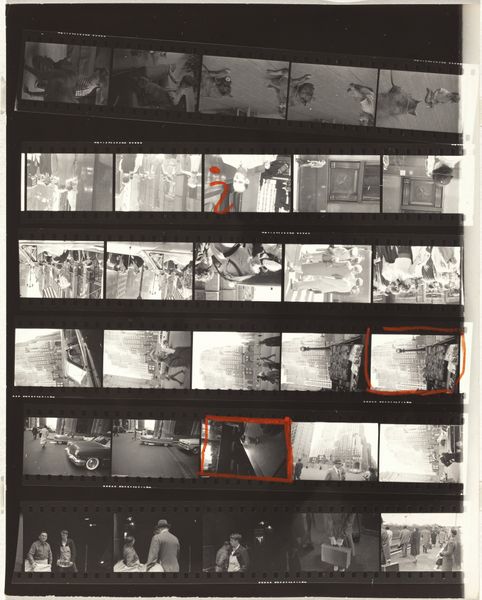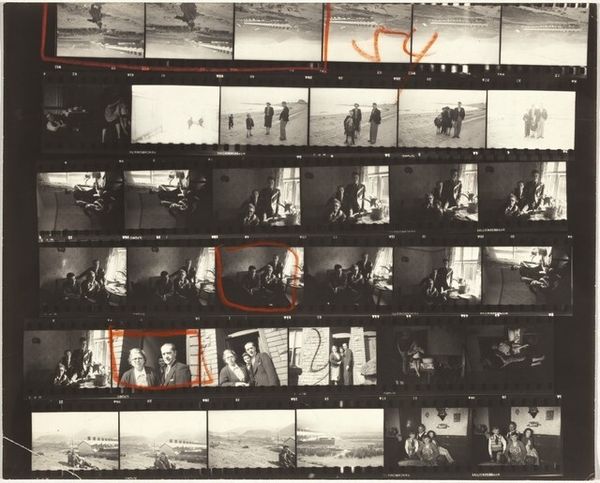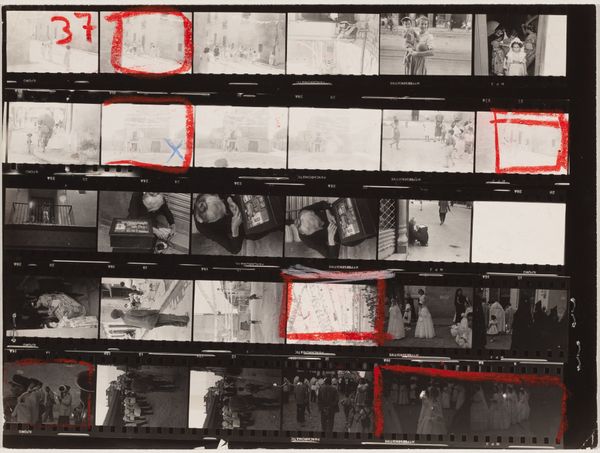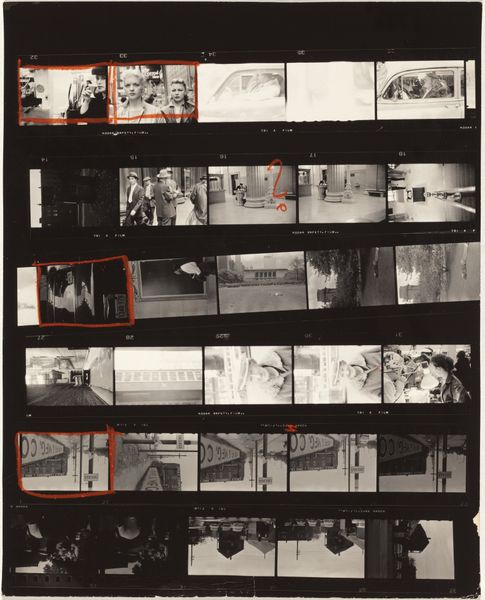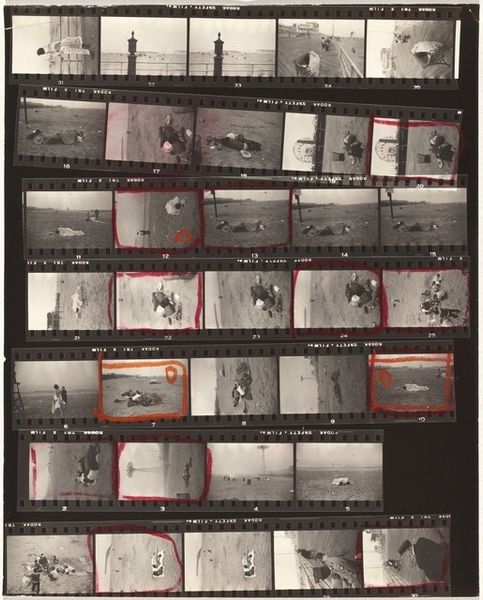
photography, gelatin-silver-print
#
landscape
#
social-realism
#
photography
#
gelatin-silver-print
#
modernism
Dimensions: overall: 25.2 x 20.2 cm (9 15/16 x 7 15/16 in.)
Copyright: National Gallery of Art: CC0 1.0
Curator: Robert Frank's "Guggenheim 687/Americans 49--U.S. 91, Idaho" from 1956, is a gelatin-silver print. It presents as a sequence, doesn’t it? Almost like a filmmaker’s storyboard, raw and unfiltered. Editor: Absolutely! My immediate reaction is that of peering into a forgotten America. It feels incredibly poignant. What draws my eye particularly is that small sequence with the crosses on the hills – it is the second line, fourth picture and last line third picture from left to right. What are we to make of it, in that constellation of images? Curator: Frank's "The Americans," a seminal work of social commentary, confronted the mythos of mid-century America with stark honesty. He shot across America during his Guggenheim Fellowship. In many of the strips of negative are reoccurring symbols as religious objects. I'd add too that it isn't merely social, but personal. His framing and tonality capture both the grandeur and the despair of that time. Editor: True, the sequence really enhances that emotional range. It reminds us that, through this very small silver-gelatin print, Frank confronted post-war idealism to question collective national identity in light of actual American experiences. Curator: And notice Frank’s deliberate rejection of idealization, especially in how he portrays roadside landscapes – it’s not picturesque, but rather, matter-of-fact, bordering on melancholic. He seems to embrace imperfection. Editor: Definitely. Frank’s photographs served as an artistic precursor to later documentaries, where narratives emerge less through directed framing and more through accumulation, arrangement, and accidental interactions captured in time. This contact sheet anticipates, in many ways, ways to show real images from the word in a curated order. Curator: It’s a visceral slice of life, even within a carefully composed framework like this contact sheet. These photographs continue to resonate so powerfully today. Frank’s work demands that we critically engage with our world, rather than passively observe it. Editor: I agree; Frank’s legacy endures because he forces us to confront our own assumptions about what America truly means, and to accept a more complex, contradictory picture of it. Curator: It is precisely in this capacity that Frank's genius thrives: a persistent refusal to settle for the easy answer, instead inviting continuous dialogue and interpretation. Editor: Indeed—a visual chorus of questions and whispers echoing across time, inviting us into an unfinished conversation about who we were, are, and aspire to be.
Comments
No comments
Be the first to comment and join the conversation on the ultimate creative platform.
